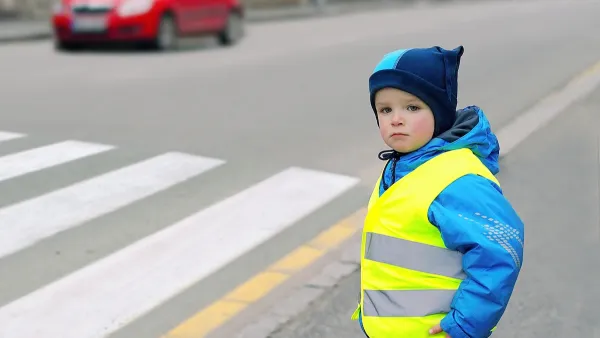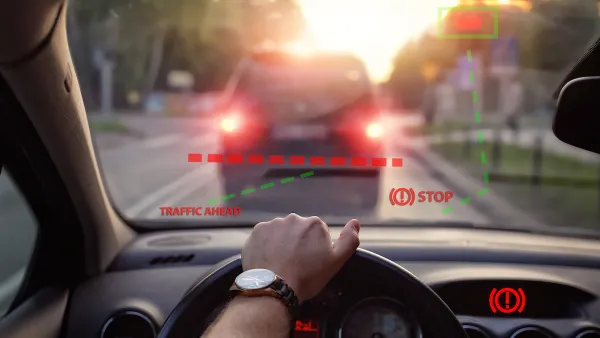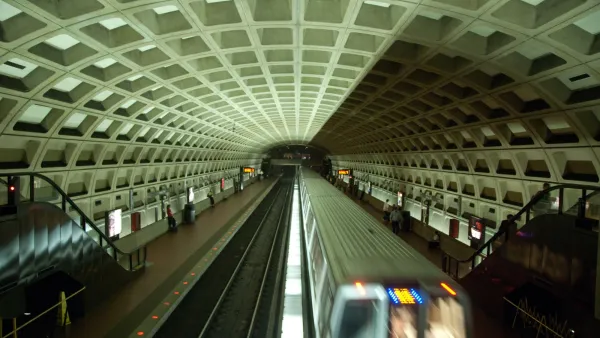Two commuter trains traveling toward each other on a single track crashed in the Puglia region of southern Italy on Tuesday morning. Human error is suspected. The trains and track lacked automatic train control and automatic braking.
Total fatalities won't be determined until a crane can pull the cars apart. Other media outlets report that 23, not 25, had died. Forty-three people were injured. Each train had four passenger cars, but only one rail car was left standing. The trains were estimated to have been traveling at 56 m.p.h. at the time of impact.
The BBC video shows an aerial sight of the crash. It's difficult to even detect some of the rail cars among the wreckage.
"Prime Minister Matteo Renzi sent the infrastructure and transportation minister, Graziano Delrio, and the head of the civil protection agency, Fabrizio Curcio, who oversees emergency response in Italy, to the site of the crash," reports Gaia Pianigiani from Rome for The New York Times.
The circumstances that led to the collision were unclear. A team of inspectors from the transportation ministry will work with local prosecutors to determine the cause, officials said.
Lack of automatic braking or automatic train control
Stefania Gnesi, an information technology staff researcher at the National Research Council, said that the trains were probably operating on instructions from dispatchers. “It’s probable that there was some human error in this chain, in a section of train track that has no automatic control or automatic brake system,” she said.
Automatic systems are used on most of Italy’s railway lines, but have not yet been installed in some areas, especially in southern Italy, which is less developed and less prosperous than the north.
The crash is the most deadly since June 2009 when a 14-car freight train carrying liquefied petroleum gas derailed and exploded near Tuscany, ultimately killing 32 people.
Deadly Amtrak derailment in May 2015
Similar issues regarding automatic braking were raised in a May 2015 Amtrak derailment in Philadelphia that left eight dead.. The Federal Railroad Administration ordered Amtrak to install automatic train control on northbound trains in the Northeast Corridor that is already working for southbound trains, notes a later post.
According to CNN, "(t)he system notifies an engineer if a train is speeding and applies the brakes automatically if the engineer does not respond. Amtrak is in the process of installing a sharper technology known as Positive Train Control (PTC) on all of its tracks."
The National Transportation Safety Board determined a year after the derailment that human error was the cause of the derailment, specifically resulting from the "loss of situational awareness by the train’s engineer after his attention was diverted to an emergency involving another train."
Head-on crash in Germany in February
A similar head-on crash on a single track occurred on February 9 in Germany, leaving 10 dead. Human error was to blame. After an investigation, it was determined that the dispatcher was "playing a game on his cellphone until just before the accident," reported Alison Smale for The New York Times in April. Unlike the Italian crash, the trains and track were fitted with automatic braking.
That crash raised "new questions about the safety and reliability of a rail network in Europe that has been the envy of much of the world, reported Melissa Eddy for The New York Times in February, adding that "crashes across Europe in recent years have highlighted weaknesses in the rail network." Eddy later wrote that "the German news media have reported that the [automatic braking] system had been turned off at the time of the crash."
FULL STORY: Train Crash in Italy Leaves at Least 25 Dead and Dozens Injured

Analysis: Cybertruck Fatality Rate Far Exceeds That of Ford Pinto
The Tesla Cybertruck was recalled seven times last year.

National Parks Layoffs Will Cause Communities to Lose Billions
Thousands of essential park workers were laid off this week, just before the busy spring break season.

Retro-silient?: America’s First “Eco-burb,” The Woodlands Turns 50
A master-planned community north of Houston offers lessons on green infrastructure and resilient design, but falls short of its founder’s lofty affordability and walkability goals.

Test News Post 1
This is a summary

Analysis: Cybertruck Fatality Rate Far Exceeds That of Ford Pinto
The Tesla Cybertruck was recalled seven times last year.

Test News Headline 46
Test for the image on the front page.
Urban Design for Planners 1: Software Tools
This six-course series explores essential urban design concepts using open source software and equips planners with the tools they need to participate fully in the urban design process.
Planning for Universal Design
Learn the tools for implementing Universal Design in planning regulations.
EMC Planning Group, Inc.
Planetizen
Planetizen
Mpact (formerly Rail~Volution)
Great Falls Development Authority, Inc.
HUDs Office of Policy Development and Research
NYU Wagner Graduate School of Public Service




























